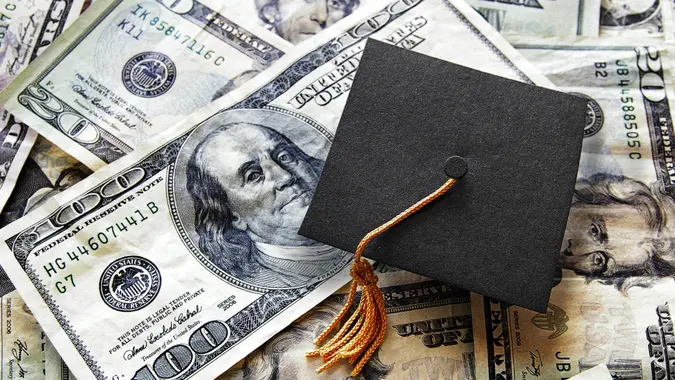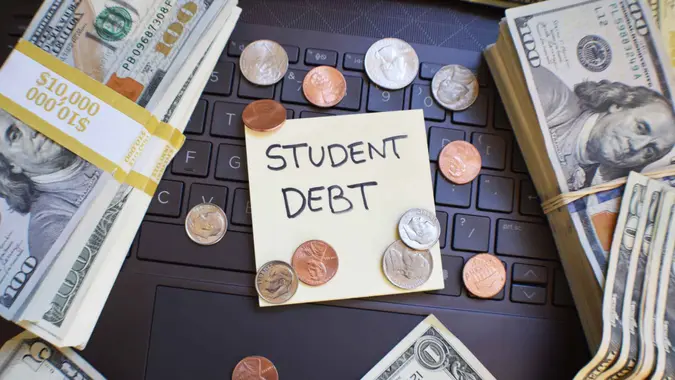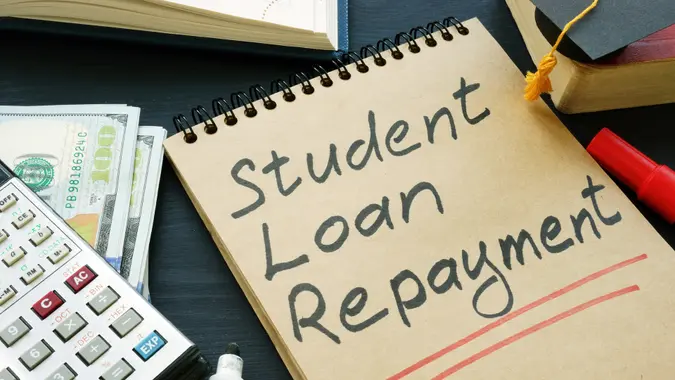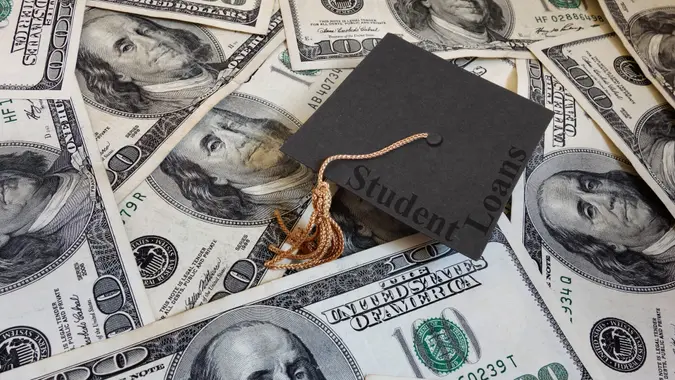Why Your Student Loan Payment May Go Up in 2025

Commitment to Our Readers
GOBankingRates' editorial team is committed to bringing you unbiased reviews and information. We use data-driven methodologies to evaluate financial products and services - our reviews and ratings are not influenced by advertisers. You can read more about our editorial guidelines and our products and services review methodology.

20 Years
Helping You Live Richer

Reviewed
by Experts

Trusted by
Millions of Readers
Student loan payments are a major concern for millions of borrowers, especially as policies and economic conditions shift. If you’ve noticed signs that your monthly payment may increase in 2025, you’re not alone.
This potential increase stems from several factors, including the expiration of relief policies, policy changes, and broader economic trends. Staying informed and preparing now could save you from financial stress later.
Here’s what you need to know about why your payments may increase and what steps you can take to manage the change.
Expiration of Temporary Relief Policies
One of the main reasons your student loan payment may go up in 2025 is the expiration of temporary relief policies put in place during the COVID-19 pandemic. Programs like the CARES Act provided borrowers with a 0% interest rate and paused payments on federal student loans. While these relief measures helped millions, they weren’t permanent.
After payments officially resumed in late 2023, many borrowers saw their regular loan terms reinstated by 2024. By 2025, any remaining COVID-related relief options geared toward income-driven repayment recalculations or other extensions will likely have run their course. This means any adjustments that reduced your payments temporarily — like waived interest — could revert or be modified, resulting in higher monthly payments.
Biden’s loan forgiveness plan, the SAVE (Saving on a Valuable Education) program, was designed as an income-driven repayment plan to make federal student loan payments more affordable. It calculated payments based on a borrower’s income and family size, often reducing monthly payments significantly. However, the plan is currently on hold due to litigation. While borrowers are not required to make payments during this time, anything can happen since the Trump administration is not expected to continue defending the SAVE Plan in court.
Instead of SAVE and other Income-Driven Repayment (IDR) plans, Project 2025 calls for a single IDR option that could increase monthly payments for borrowers compared to what they’d pay under SAVE.
Policy and Program Changes
Policy shifts can also impact repayment strategies. Some recent changes include modifications to income-driven repayment plans and potential program restructures that aim to balance repayment affordability with federal budget constraints.
Also, Congress and federal agencies continue to discuss adjustments to Public Service Loan Forgiveness (PSLF) and other similar programs. If funding or regulations shift, these changes could influence your repayment amounts.
Economic Considerations
Economic factors also play a role in determining student loan repayment costs. Rising inflation, fluctuating interest rates, and broader economic shifts can all trickle down to impact borrowers.
While federal student loans generally have fixed interest rates, private student loans often do not. Borrowers relying on private loans with variable rates might see their payments increase if market rates rise. Even for federal loans, changes in the economy may influence new repayment terms or adjustments by policymakers looking to address budget concerns.
It’s no secret that inflation can tighten household budgets, leaving less disposable income to allocate toward student debt. If you’re already dealing with rising living costs, a higher student loan payment in 2025 could place an added strain on your finances.
How Borrowers Can Take Action to Prepare
While these changes may seem a little daunting, you can still take proactive steps to better manage the impact of a potential payment increase.
Reassess Your Financial Plan
If you anticipate challenges in meeting your student loan payments, now is the time to prepare for changes. Build an emergency savings fund to cover a few months of payments, just in case.
Start by revisiting your monthly budget. Look for areas to cut back or adjust to accommodate a higher payment. Review all expenses — including subscriptions, entertainment, and discretionary spending — and see where you can free up funds.
Explore Alternative Repayment Options
Income-Driven Repayment (IDR) plans cap your monthly payments based on your income and can be an effective way to manage larger loan burdens. Recalculate your eligibility for these plans annually to ensure you’re still on the most affordable option.
Other options include refinancing, which may lead to lower interest rates for those with good credit. Just be cautious — refinancing federal loans through a private lender eliminates access to federal benefits like PSLF and repayment pauses.
Use These Tools:
- StudentAid.gov to explore repayment plans and calculators
- Loan servicer calculators to estimate payment changes based on income adjustments or interest rates
- Refinancing comparison tools to evaluate private loan alternatives
Stay Updated on Legislative Changes
Finally, keep an eye on news or updates related to student loan policies. Subscribe to newsletters from trusted organizations like the U.S. Department of Education and nonprofit organizations focused on student debt.
Being informed will help you anticipate changes and take advantage of new programs or policies in real time.
More From GOBankingRates
 Written by
Written by  Edited by
Edited by 























